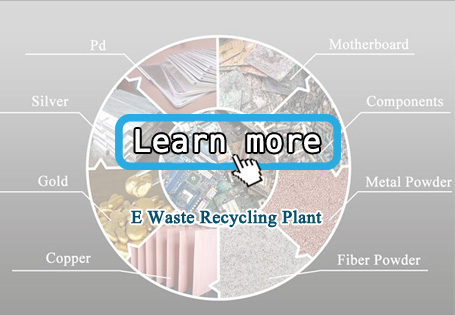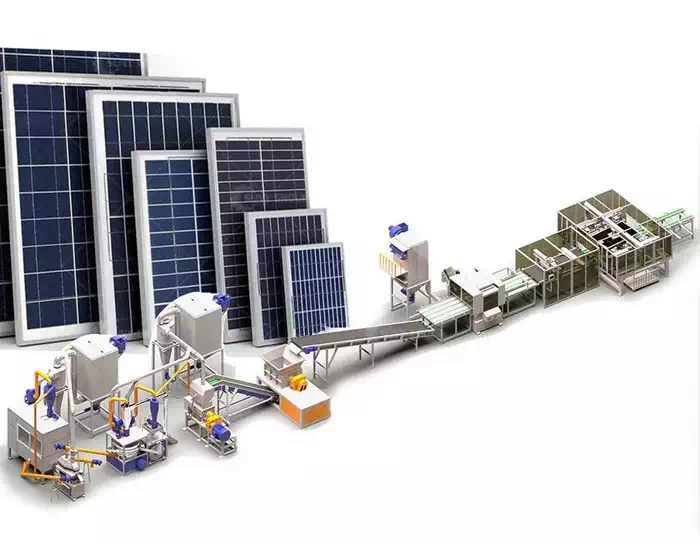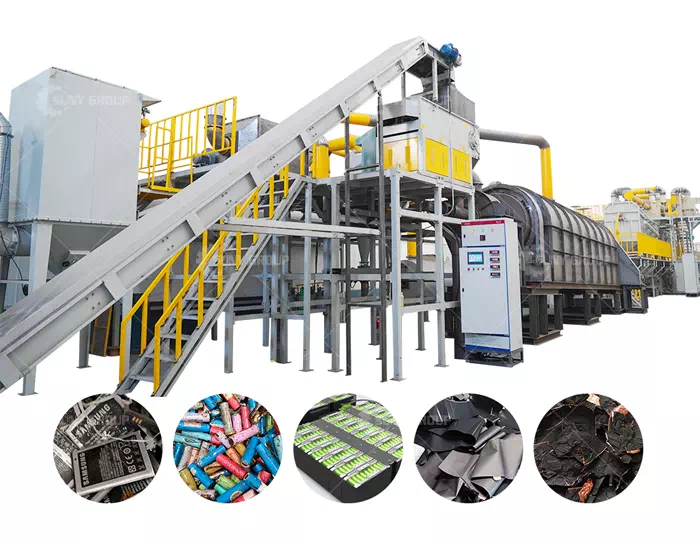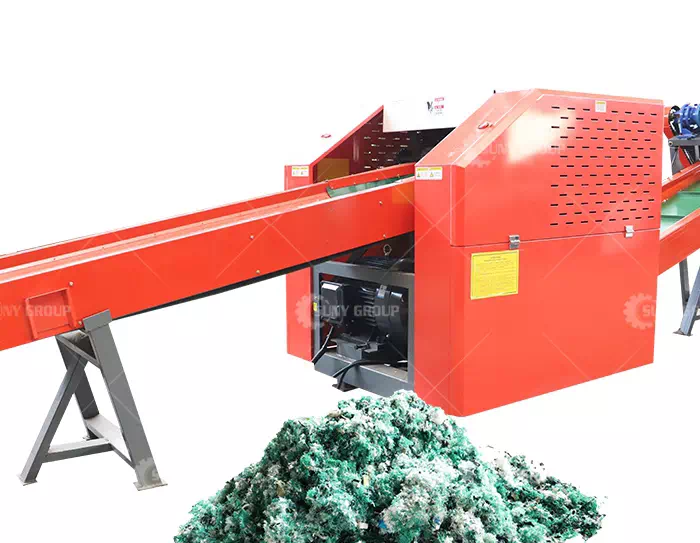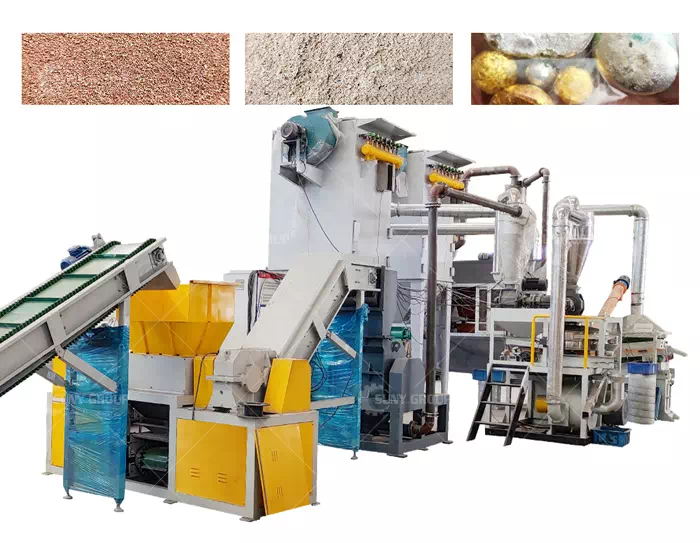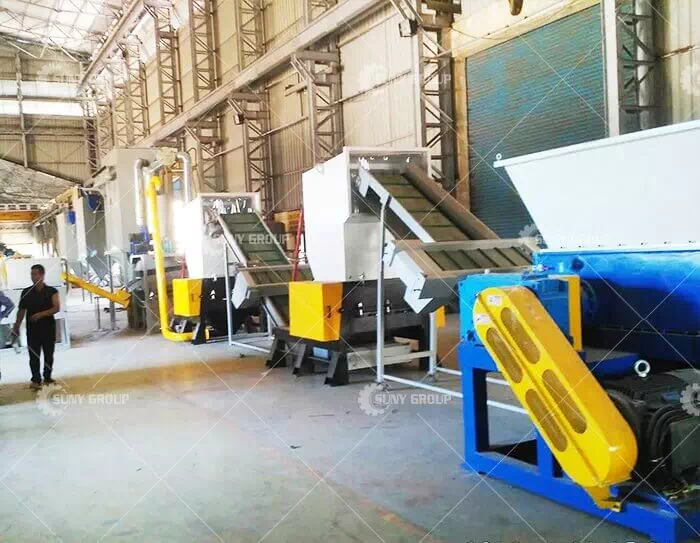Recovery of metals from e-waste
The recovery process of metals from electronic waste is relatively complicated. Usually, metals and impurities are separated by high temperature, and then various metals are extracted through several corresponding processing processes. Precious metals such as copper, gold, silver, platinum, and palladium in electronic waste are generally recovered by converter processing. The recycling process of electronic waste containing precious metals in Sweden's Boliden Company and Canada's Noranda Company is:
1) Melting:
The sampled different electronic wastes are uniformly mixed and fed into the furnace as raw materials. Some fuel needs to be added at the beginning of incineration. When the furnace temperature is 1200℃~1250℃ and the energy contained in PCBs is 35~36GJ/t, the processing process can be maintained by the energy released by the organic substances contained in PCBs. . During the smelting process, the burning of the plastic and the oxidation of the metal aluminum release heat. In order to control the smelting temperature not to be too high, it is necessary to add silicate, and at the same time control the amount of plastic added. During the smelting process, the top layer of molten electronic waste is slag and the bottom layer is copper. Copper and a little slag flow into the converter, and the remaining slag and ore go through flotation to recover some of the precious metal. Finally, the remaining slag is piled up in the residue, which can be further concentrated and refined to recover precious metals.
2) Refining:
The copper from the melting furnace is added to the converter for mixing and refining, and the iron and sulfur in the copper are melted by blowing oxygen to purify the copper, and silicate is added to form a slag, the temperature of which is about 1200 °C. The refining process of the converter is exothermic, and the oxidation process can provide enough heat to operate the converter. The upper layer of slag mainly includes iron and zinc; the lower layer is blister copper or cupronickel. The slag can be further purified to obtain by-product iron sand and zinc slag, and then the iron sand and zinc slag can be processed by the electric furnace to obtain iron and zinc. The metal dust obtained after the industrial waste gas produced in the converter can be recycled.
3) Electrolysis:
The blister copper (98% copper) obtained in the converter is cast into anode copper, the so-called anode casting, and the formed anode copper contains 99% copper and 0.5% precious metals. The copper electrode is purified by electrolysis, using sulfuric acid and copper sulfate as the electrolyte, and the direct current during the processing is about 20,000 amperes. 99.99% pure copper is generally available on the cathode plate, while precious metals and impurities remain on the anode plate as anode attachments for further refining. Refining of precious metals in refineries, gold, silver, platinum, palladium can be recycled.
During processing, anode deposits are leached, copper sulfate and tellurium are obtained from a solution of copper telluride and nickel sulfate dissolved, and the residue is dried and refined in a precious metal furnace. In the smelting process, selenium is recovered as part of the first, and the remaining part is cast into silver anodes and then electrolyzed under high current to obtain high-purity silver and gold mucilage. Precipitation of impurities. The recovery process of tin and lead In the smelting process, 75% to 80% of the lead comes from the solder. In the process of anT solder, 15% to 20% of the lead evaporates with the industrial waste gas, and about 5% of the lead remains in the slag. , which can be obtained during flotation recovery of copper and other precious metals. In Kaldor furnaces (lead melting furnaces), lead is present in industrial waste gas or slag. The lead in the slag can be captured in the copper process; while the lead existing in the industrial waste gas, through the gas processing plant, most of it enters the converter directly or indirectly, with the evaporation of the industrial waste gas, 99.9% of the lead Will be trapped in the gas filter as dust. About 90% of the tin from the Kaldor furnace enters the copper converter, the vast majority of which is discharged with industrial waste gas. The recovery path of tin in industrial waste gas is the same as that of lead, and most of the tin is captured by the filter as dust.
Recommend products
CONTACT US:
If you have any requirement or suggestion, please fill in the form and send to us, thanks!E-mail:sunymachine@gmail.com | Whatsapp:+8613674945231


